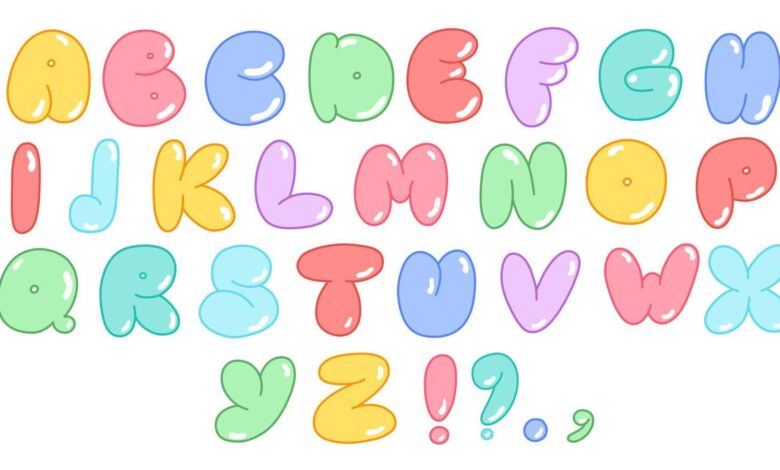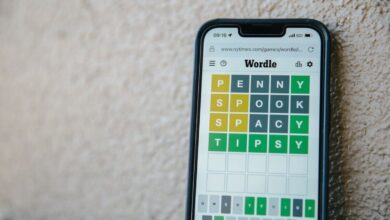Bubble Font: Tips and Tricks for Perfecting Your Typography

Introduction
In the vibrant world of typography, bubble fonts stand out with their playful and eye-catching design. These fonts, characterized by their rounded, inflated letters, bring a sense of fun and whimsy to any text. Whether you’re designing a poster, a social media post, or a brand logo, bubble fonts can make your content more engaging and memorable. This guide will delve into the world of bubble fonts, exploring their definition, popular examples, creation methods, and best practices for integration into your designs. By the end of this article, you’ll have a comprehensive understanding of bubble fonts and how to use them effectively in your projects.
1. What is a Bubble Font?
Bubble fonts are a unique type of typeface characterized by their rounded, puffy appearance. These fonts often resemble inflated balloons or rounded bubbles, giving them a playful and informal look. The distinctive feature of bubble fonts is their 3D effect, which makes the letters appear as if they are popping off the page. This visual effect is achieved through careful manipulation of letter shapes and spacing, often accompanied by vibrant colors and gradients.
Historically, bubble fonts emerged from the broader category of novelty fonts that gained popularity in the 1960s and 1970s. Their evolution has been influenced by various design trends, including psychedelic art and pop culture. Over the years, bubble fonts have been used in various media, from comic books and advertisements to children’s books and event flyers. Their ability to grab attention and evoke a sense of fun makes them a popular choice for designs aimed at a younger audience or those seeking to convey a light-hearted message.
Bubble fonts differ significantly from other font styles like serif or sans-serif fonts. While traditional fonts focus on readability and formality, bubble fonts prioritize visual impact and personality. They are often used to inject a sense of excitement and creativity into design projects, making them ideal for applications where attracting attention is key.
2. Popular Bubble Fonts and Their Uses
There are several popular bubble fonts that have made a significant impact in the design world. One notable example is “BubbleGum,” which features plump, rounded letters with a glossy finish. This font is often used in children’s book covers, toy packaging, and fun-themed event invitations. Another popular choice is “Blowbrush,” known for its playful, hand-drawn appearance that resembles chalk or marker strokes. It’s frequently utilized in social media graphics, posters, and informal branding.
Bubble fonts find their applications in various design projects. For instance, they are commonly used in posters and flyers to create an eye-catching focal point. Their playful nature makes them suitable for promotional materials aimed at a younger audience, such as advertisements for kids’ products or family-friendly events. Additionally, bubble fonts are often employed in social media graphics to capture viewers’ attention and enhance the visual appeal of posts.
Case studies of successful designs using bubble fonts highlight their versatility and effectiveness. For example, a local ice cream shop used a bubble font for their branding and promotional materials, which helped convey the fun and enjoyable experience of their products. The font’s playful design effectively captured the essence of the brand and resonated with their target audience.
3. How to Create and Customize Bubble Fonts
Creating and customizing bubble fonts requires a blend of creativity and technical skills. Several software tools can assist in this process, such as Adobe Illustrator, FontForge, and Glyphs. These tools offer various features for designing and modifying fonts, including options for adjusting letter shapes, spacing, and effects.
To create your own bubble font, start by sketching out your ideas. Focus on the rounded, inflated shapes that characterize bubble fonts, and experiment with different styles and sizes. Once you have a design you like, digitize your sketches using vector graphic software. This process involves tracing your sketches and refining the letterforms to achieve the desired look. After digitizing, you can use font creation software to compile your letters into a complete font family.
Customizing bubble fonts involves adjusting elements like color, gradient, and shadow effects. Many designers use these techniques to enhance the 3D appearance of the font and make it stand out even more. When customizing, consider the context in which the font will be used and make adjustments that align with the overall design aesthetic.
4. Integrating Bubble Fonts into Your Designs
Integrating bubble fonts into your designs requires a thoughtful approach to ensure they complement rather than overwhelm other elements. Start by selecting a bubble font that fits the tone and purpose of your project. Consider how the font will interact with images, colors, and other text elements to create a harmonious design.
Best practices for using bubble fonts include balancing them with more subdued elements. For instance, pairing a bubble font with a clean, sans-serif typeface can create a dynamic contrast that highlights key messages while maintaining readability. Avoid using bubble fonts for long blocks of text, as their playful nature can detract from readability. Instead, use them for headlines, titles, or accent text to draw attention and add visual interest.
Common mistakes to avoid include overusing bubble fonts or placing them in inappropriate contexts. While bubble fonts are fun and eye-catching, they may not be suitable for formal or professional designs. Additionally, ensure that the font size and spacing are optimized for legibility to avoid compromising the effectiveness of your design.
Conclusion
Bubble fonts offer a unique and engaging way to enhance your design projects with a touch of playfulness and creativity. From their distinctive appearance to their versatile applications, bubble fonts can significantly impact the visual appeal of your content. By understanding their characteristics, exploring popular examples, and learning how to create and integrate them effectively, you can leverage bubble fonts to make your designs stand out. Embrace the fun and creativity that bubble fonts bring, and experiment with their use to create memorable and impactful designs.




